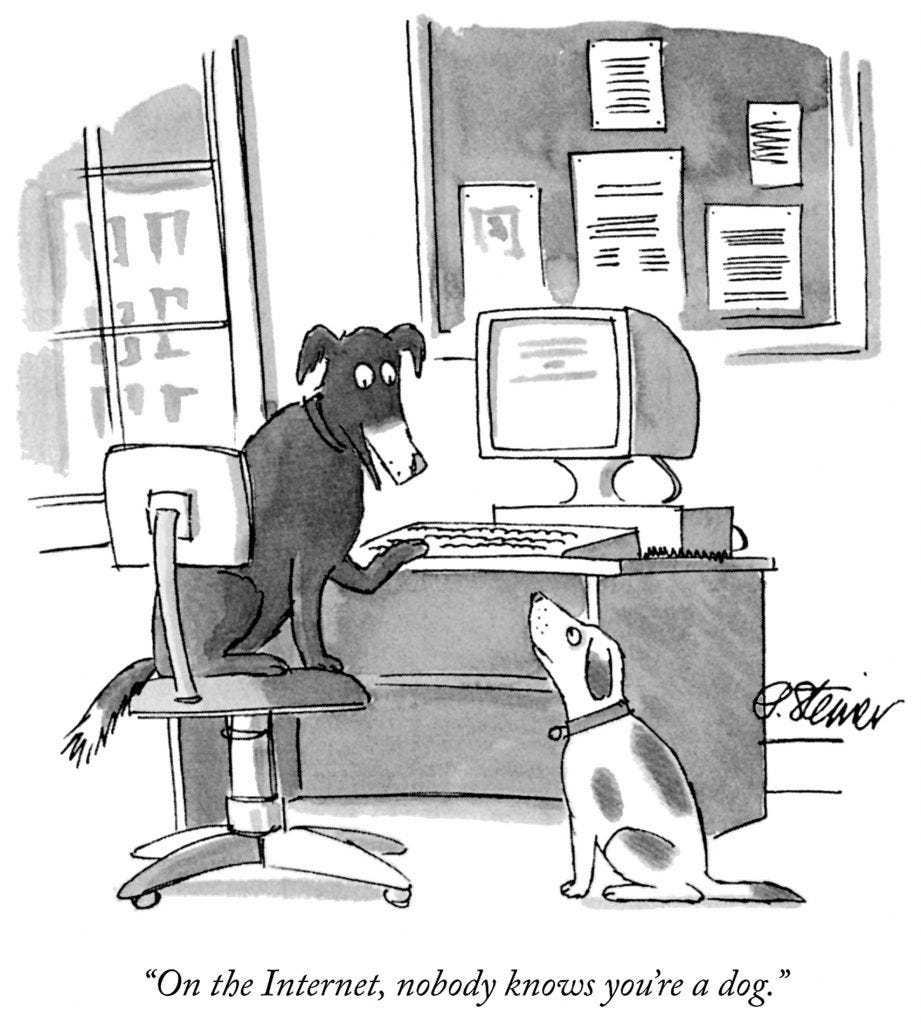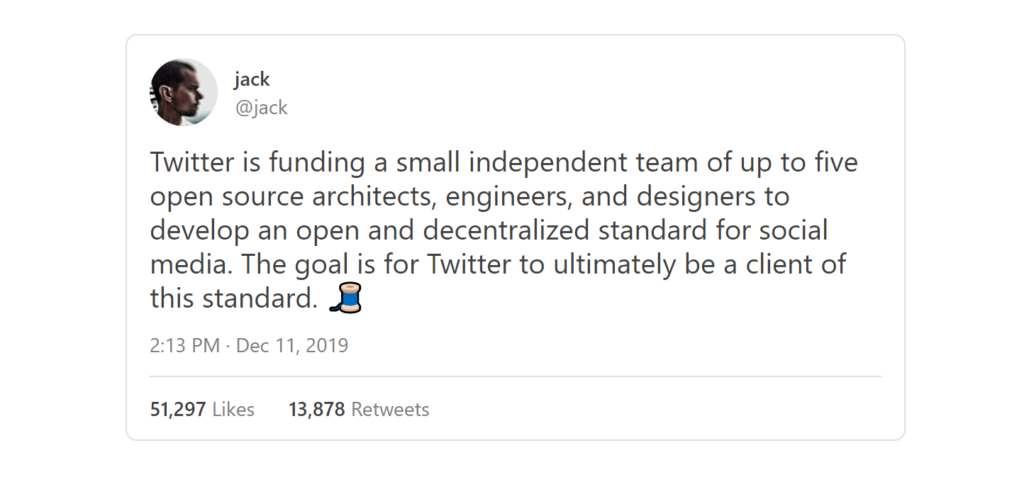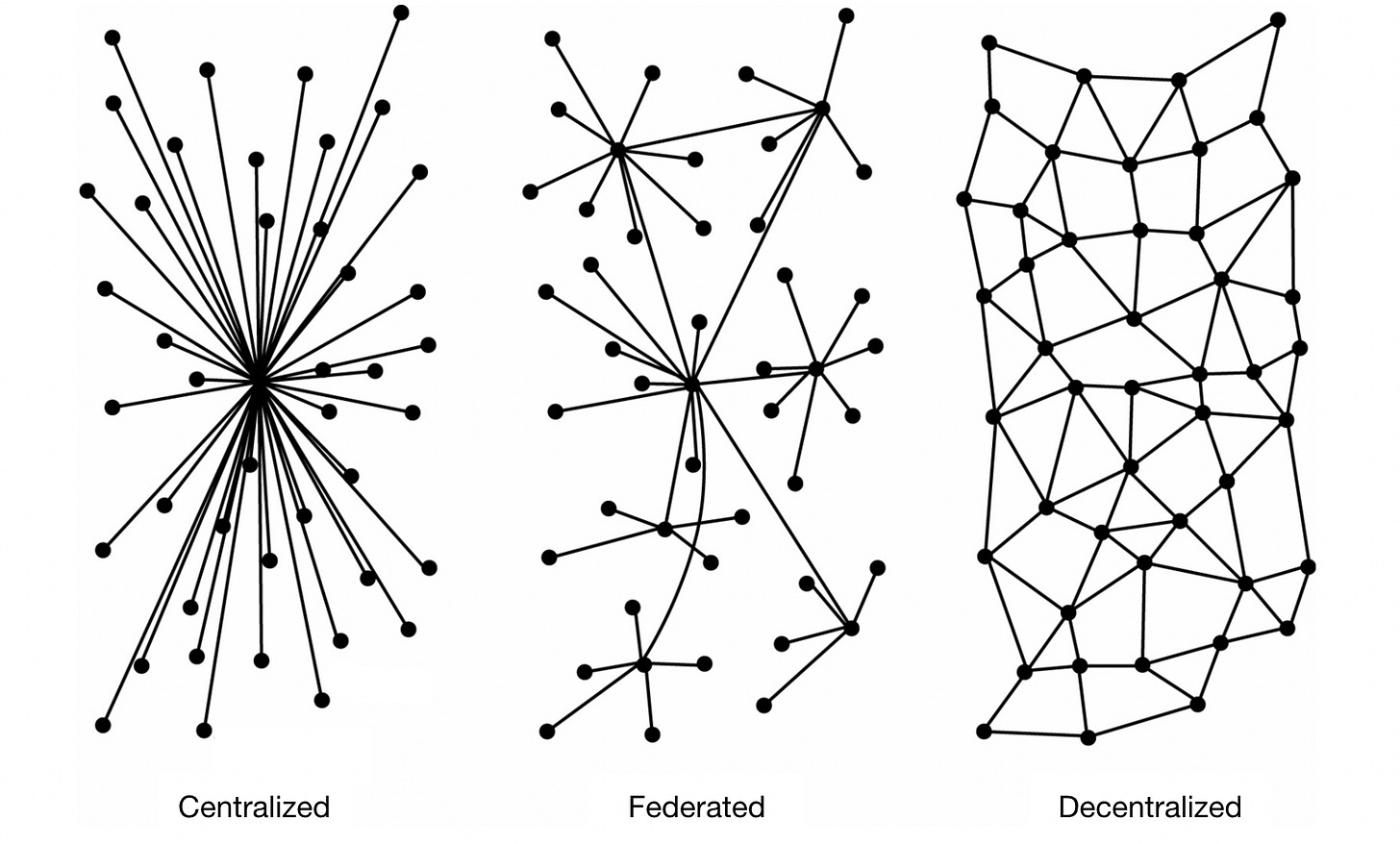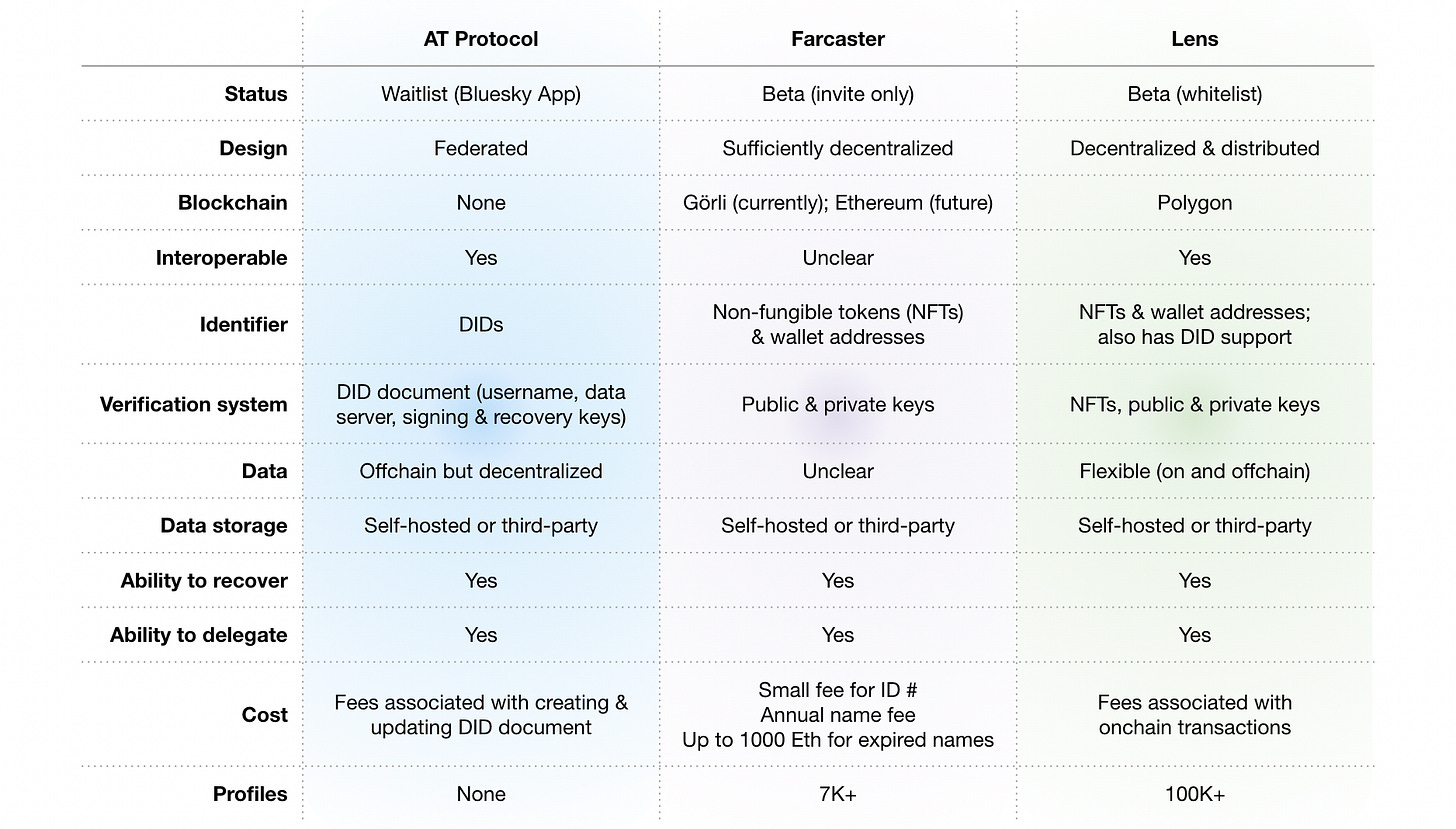Twitter is dead.
If I were to write a eulogy, I may ruminate about how it was the best job with the best people. Perhaps I’d talk about my old boss and the standard of excellence they set, the indelible culture, the global impact the product had, why people drank the salt juice, and, ultimately, why Twitter is the yardstick with which I’ve measured every opportunity since.
But, I’ll spare you. I still hold a flurry of emotions best reserved for group chats.
Instead, consider this a commencement. The end of an era but, hopefully, the beginning of another.
Long live Twitter.

Five years ago, I fell down a crypto rabbit hole prompted by the promise of a peer-to-peer electronic cash system. As a global citizen, I couldn’t fathom the inefficacies in remittance; bitcoin provided the perfect solution that begat more questions … What about identity? How do we bridge online and offline? Is this as realistic for people in America as those in rural Kenya?
I joined Twitter’s strategy team soon thereafter. With this promotion from user to employee, the link between social identity and money crystalized.

On the early internet, nobody knew if you were a dog. You could use unidentifiable pseudonyms to spin up a personal blog or communicate with others. Sure, IP addresses could link your internet activity but personal identifiable information (PII) wasn’t prevalent online until the advent of online advertising and ecommerce. As people signed up for email, online advertising took form; early email clients like HotMail stored name, mailing address, email address, account number, and phone number. Businesses sought to market to new customers using this internet data. Later, sites like Amazon and Netflix connected online and offline by mailing books/dvds. Social media, particularly Facebook, showed that identity and money are inexorably linked through masterful targeted advertising. Your identity is the amalgamation of what you communicate to the world. Money is an implicit form of communication. You say who you are and what you care about with your purchasing behavior.
Driven by financial incentives, the internet entwined legal identity (data you find on a passport) with online handles, avatars, behaviors and clicks, and communities. However, you shouldn’t have to reveal your PII to exist online (I previously wrote The case for pseudonymity). Twitter, Tumblr, and Reddit are prominent platforms where one can exist pseudonymously. So when I started my gig at Twitter, I kept wondering—what would it look like if I could present as my Twitter handle on the internet but securely connect it to PII that I could share voluntarily on various websites? My Twitter handle at the time was a silly pun and not my first name, so this made perfect sense then. There exist standards and products that address specific parts of what I envisioned, for example:
- People use OAuth to give one app (eg. Clubhouse) limited and revokable access to their data on another app (eg. Instagram) without sharing their password. This is an industry standard that’s been used 1B+ times and few know they’ve interacting with it.
- On the other hand, people use Keybase to link their online identities across Twitter, GitHub, Reddit, Hacker News, Mastodon, Bitcoin wallet addresses, and more. To prove ownership, Keybase users sign a public, verifiable statement. They can then use Keybase to send messages to other users using their online aliases (eg. Twitter handle). Keybase was acquired by Zoom in 2020.
To put it simply, I wanted to own and permission my online data but nest it under an alias, my Twitter handle.

I remember talking with the verification product manager in 2019 and asking when they would put Twitter, and verification, on chain. The guy was trying to get cross-functional stakeholders to align on literally anything and here I was asking crazy questions. The philosophical questions I was asking introduced me to decentralized identifiers (DIDs) and verifiable credentials (VCs). DIDs are basically digital aliases. They are associated with a DID document that contains verification methods, personal data, and more. VCs represent offline credentials like your passport, college degree, or work history. This data is secured cryptographically and linked to a DID. Fully realized, this standard could verify that people aren’t bots at scale. Even better, it could be can be adapted to any modern blockchain. More on this later.
Verification on Twitter has been unsolvable for as long as it’s existed—why not use cryptography to allow people to confirm their legal identity and credentials without doxxing themselves, without centralized and seemingly arbitrary policy, and in a way that allows consumers to own their namespace. Twitter certainly had the scale and distribution to make this a reality. However, considering the company’s shipping speed and the work that goes into creating a sound protocol, a decentralized Twitter was, honestly, blue-sky thinking ((see what I DID there? (I’m so sorry)).
Fast forward three years and Twitter is going private, verifications might cost $8 a month, and there are talks of Twitter payments … I think it’s time to revisit this galaxy brain idea.

No one is talking about Bluesky and I think that’s weird.
In December 2019, Jack Dorsey announced “Twitter is funding a small independent team of up to five open source architects, engineers, and designers to develop an open and decentralized standard for social media. The goal is for Twitter to ultimately be a client of this standard.” This last sentence is endgame.
Jack shared guiding principles for why Bluesky (and decentralized social) needs to exist. I agree with some and want to elaborate on other ideas:
- Identity: people should be able to own their data, choose who can access said data, be able to monetize it as they see fit, and opt-into experiences that align with their interests. Today, you cannot easily migrate your content from Instagram to TikTok and that’s hostile (cross-posting is allowed for Twitter, Tumblr, and FB). Meta is financially incentivized to make people create and post on their platform and not competitors. With centralized lock-ins, data integrity and security is critical. If Google+ (lol) didn’t centralize personal data for example, perhaps 50M+ users wouldn’t have been compromised in 2018.
- Governance: people and communities should create policies and moderation that adhere to them. We’ve seen centralized entities create blanket standards that don’t account for cultural nuance, diverse identities, or an ever-evolving digital landscape. It’s evident that having one arbiter of truth doesn’t work because truth is an open question with varied and often contradictory answers.
- Incentives: user-generated content is the backbone of the modern web and certainly of social platforms, yet users get a sad fraction of advertising dollars. Your interest graphs and seemingly minute behaviors like time spent power titans like Google and Meta. I’m particularly fascinated by Instagram AR filter makers; technical artists who get paid nothing yet are a core element of the app. Why shouldn’t they have a marketplace and sell their filters across the web? Why shouldn’t developers and creators and everyday people and small businesses? Conversely, maybe we should reorient social from an attention-based economy to a public good. To be clear, this isn’t a web2 versus web3 take (you can read my thoughts on that in my essay Web3: the internet’s 3% difference).
The independent Bluesky team recently unveiled the AT (Authenticated Transport) Protocol, a new federated social network technology that uses ideas from decentralized technologies. Notably, AT isn’t a blockchain. And it isn’t the only project that aims to establish standards for decentralized social networks.
The promise of decentralized social

There are three compelling projects working toward decentralized social: AT Protocol (ATP), Farcaster, and Lens Protocol. Two are compatible with DIDs: ATP and Lens. Two are onchain: Farcaster is currently on Görli (an Ethereum testing network) and Lens is on the Polygon blockchain. I will not cover Mastodon here because, frankly, it’s not something I see gaining mainstream adoption. Anyway, let’s get a bit technical. I reviewed each project’s developer documents and tried my best to distill the information here. Below are core concepts so we’re on the same page:
- Centralized: one single entity has control
- Federated: various connected entities where individuals retain significant autonomy
- Decentralized: various connected entities where individuals retain full autonomy
- Interoperable: ability for different protocols or blockchains to actively communicate with each other
- Public & private keys: a pair that allows you to interact with blockchains. These keys determine your wallet address (or, account). The pubic key identifies you and the private keys verifies you

AT Protocol
AT Protocol is made for large-scale distributed social applications. Uniquely, ATP is federated, which means it functions like email does. If Instagram, TikTok, and Twitter were a federation, you could communicate between and move your information/account around them flawlessly. ATP uses DIDs for identity and has no blockchain elements, though it sounds like it’s designed to mimic the decentralized nature of blockchains. Still, that doesn’t mean that apps in the federation can’t add that element. Curiously, the TBD team at Block is working on a decentralized finance protocol and using DIDs. If you put ATP and TBD together, you get the beginning of a decentralized superapp. There’s not much revealed about ATP because it’s still in progress, but we do know that the team is working on a social app called Bluesky that uses ATP. If Twitter was indeed a client of ATP in the future, then then no one person (Elon or otherwise) would be in charge. Wouldn’t that be glorious?
Farcaster
Farcaster is a sufficiently decentralized social network. The team believes your identity (Farcaster ID and name) should be onchain but your social data can be managed. While it was free to register my account (@holla), people may need to pay a fee to register both ID and name (handle) in the future. Names have an annual fee—maybe they’ll cost $8 a month or something. Expired names, similar to expired domains, will be purchased at auction for up to 1000 ether. That’s a little over $1M.
I interviewed beta testers and most cited the intimate experience as their favorite aspect; there are only ~8,000 profiles. People like the quality of conversation, archetype of early members who are in crypto or builders, and the lack of bots. It’s unclear if Farcaster can scale meaningfully and maintain this vibe. Of note, the app has yet to reach the ethereum mainnet, which is likely the reason some of my friends lost their IDs/names in a recent migration. The vision is motivating but still WIP.
For me, the NFT aspect of Farcaster is underutilized. Most if not all beta users hold community or art NFTs, which means projects like Bored Apes or Doodles could create apps on the Farcaster network and users could move easily across them. On the monetization front, advertising and sponsorships can be realized as brand NFTs proliferate and usage grows. Farcaster already has an ecosystem of apps that feel more like features you’d find in a more developed app. My favorite is the dashboard; apparently Farcaster beta users hold an estimated $61M in their crypto wallets.
Lens
Lens Protocol is a decentralized social graph. With Lens, you own your profile, where you use it, how you use it, and even how you monetize it. Lens has a Profile NFT that functions similarly to a DID document. This Profile NFT holds your handle, follow settings that enable you to you monetize your profile, delegation settings, and your content history. Your wallet address can hold several Profile NFTs. I got a walkthrough of Lens and, honestly, it’s pretty cool. There are several apps built on the protocol: Lenster is like Twitter but you can monetize your profile and posts like Patreon, Lenstube reimagines YouTube, and Troop is a payments app.
Lens is built by AAVE, a decentralized finance protocol. Am I the only one seeing the pattern between money and social? Anyway, it’s no surprise Lens is unapologetically web3, meaning that it started as fully onchain; users had to sign off each post they made in their ethereum wallet. That’s like confirming cookies each time you Tweet. Obviously this was a point of friction for the user experience and it’s been amended—you can now select which content goes on chain just like you can select which content is monetized. Spam is another challenge. Profile NFTs allow you to mitigate spam and app can set their own moderation policies, also. Ultimately, there are valid criticisms for fully onchain (and immutable) social—the right to be forgotten, latency, and economic feasibility. It’s difficult to imagine Lens at the scale of Instagram with over a billion monthly users. However, the protocol also supports DID, apps in the ecosystem pay for >98% of non-monetary transactions (gas fees), and you don’t have to put everything onchain. Lens may be the most comprehensive solution yet.
Takeaways
If I was starting a social platform or if I had to strip an existing platform’s codebase and start over, I’d be tempted to use Lens but would likely use ATP. Of the three, it appears the most easily scalable while allowing the option to add onchain elements. Step 1) figure out identity for the platform and step 2) add crypto payments. If done right, you could make a global superapp. There are many criticism for decentralized social, some of which have merit. Decentralization may result in fragmented communities with conflicting rules, is not consistently brand safe, and is difficult to monetize. The App Store has its own rules, for example, that necessitate a standard for apps that aim to reach the iOS consumer. The criticisms are fair and I don’t have the perfect rebuttal. If advertising is impossible, the answer may lie in subscriptions or, maybe, social media should’ve been a public good after all.
Okay, so … what now?
As I type, Twitter is down to ~1,000 employees in a matter of weeks. Some say the site may shut down soon—entire infrastructure teams are gone and usage hasn’t necessarily slowed down. People are migrating to Farcaster and even Mastodon, while others are surrendering to Instagram. Me? I’m hoping some smart developer(s) will scale a delightful social app or five with one of these decentralized options. Until then, I’m holding on for dear life on the bird app.
I’m also thinking about the second Harry Potter movie—the scene where Harry visited Professor Dumbledore. Harry walked into Dumbledore’s office and saw a beautiful bird from across the room. He inched closer, admiring the bird and happy as ever to see it. But, the bird looked very ill. It busted into flames in seconds and left a pile of ash. Harry was mortified, but Dumbledore explained that the bird was a phoenix; they bust into flames when it’s time for them to die and then they are reborn from the ashes. That’s Twitter.

Will Twitter have a rebirth? Yes. Will it decentralize? I don’t know, but I sure hope so.
And with that, I’ll leave you with this.



